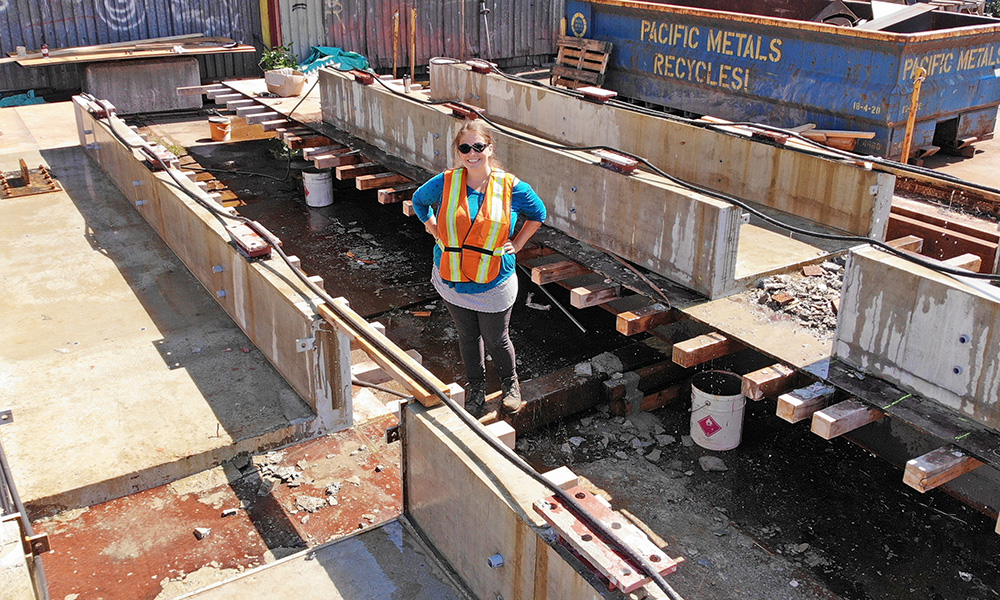
When earthquakes shake buildings to the ground anywhere in the world, Dr. Lisa Tobber can’t look away. As a structural engineering researcher at UBC Okanagan who specializes in disaster resiliency, Dr. Tobber instead leans into the chaos. There is too much to learn, she says, and there is much to do to prevent the next tragedy—and they can be prevented.
“We all know natural disasters are inevitable. But we can design buildings to survive—not collapse—so they’ll be more resilient and functional shortly after disasters,” says Dr. Tobber, UBCO’s Principal Research Chair in Women in Engineering and the BC Housing Professor in Resilient Reinforced Concrete Buildings.
She adds: “We currently design for what’s called life safety, meaning the building will keep standing and people will be able to leave. But the issue then becomes, ‘Will those people be able to get back in?’ As soon as the building is damaged or condemned, people can no longer return to their homes.”
Examining buildings and how they’re built is what she does every day at UBCO. Specifically, Dr. Tobber develops innovative structural systems for mid- and high-rise buildings that produce low-damage responses following natural disasters such as earthquakes.
“We want to know how to design more resiliency for these disasters, and then take those lessons, implement them globally and share that knowledge with the world,” she says.
BC is Canada’s most seismically active region, home to hundreds of earthquakes annually. Deep under the Pacific Ocean, 150 kilometres from Vancouver, lies the Cascadia Subduction Zone (CSZ). Locked within the 1,200-kilometre-long fault from Vancouver Island to northern California is enough energy to generate a magnitude 9.0 mega thrust earthquake—the so-called “big one.” The last CSZ mega thrust earthquake happened in the year 1700 and was powerful enough to trigger a tsunami in Japan.
It’s estimated that there is anywhere from a 10 to 37 per cent chance of another CSZ mega thrust earthquake happening at some point in the next 50 years. Ten million people live between Victoria, Vancouver, Seattle and Portland alone, a region that’s said to generate $600-billion worth of annual economic activity. Dr. Tobber and her School of Engineering colleagues aren’t shying away from the challenge to help BC prepare.
“Dr. Tobber’s research is a vital contribution to the School of Engineering’s efforts to find solutions to the world’s most pressing challenges,” says Dr. Solomon Tesfamariam, who is working alongside Dr. Tobber in UBCO’s Build Better Cluster. “UBCO wants to be a world leader in disaster resiliency, and not just from earthquakes, but also climate change, the housing crisis and beyond. We understand these are interdisciplinary challenges, so we’re building a disaster resiliency research and training platform to bring together different colleagues from the School of Engineering, UBCO and UBC Vancouver to find holistic solutions to move our planet forward.”
Please visit the UBC Okanagan News website to read the full story.
Through Strategy 10: Research Culture, UBC is working to develop the principles and practices that define a collaborative and inclusive research culture and that support mentorship, scholarship, discovery and creativity.